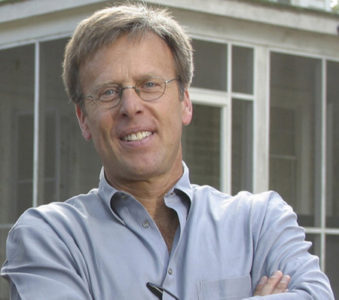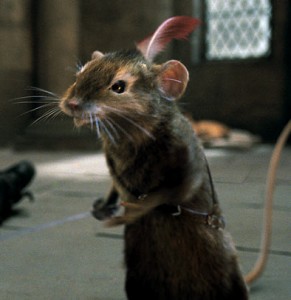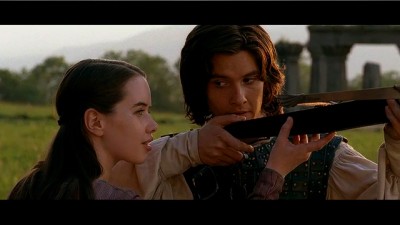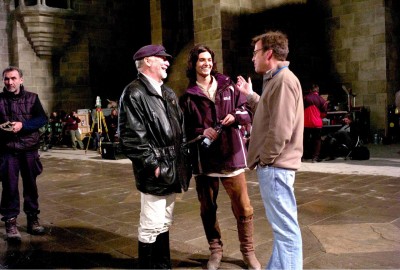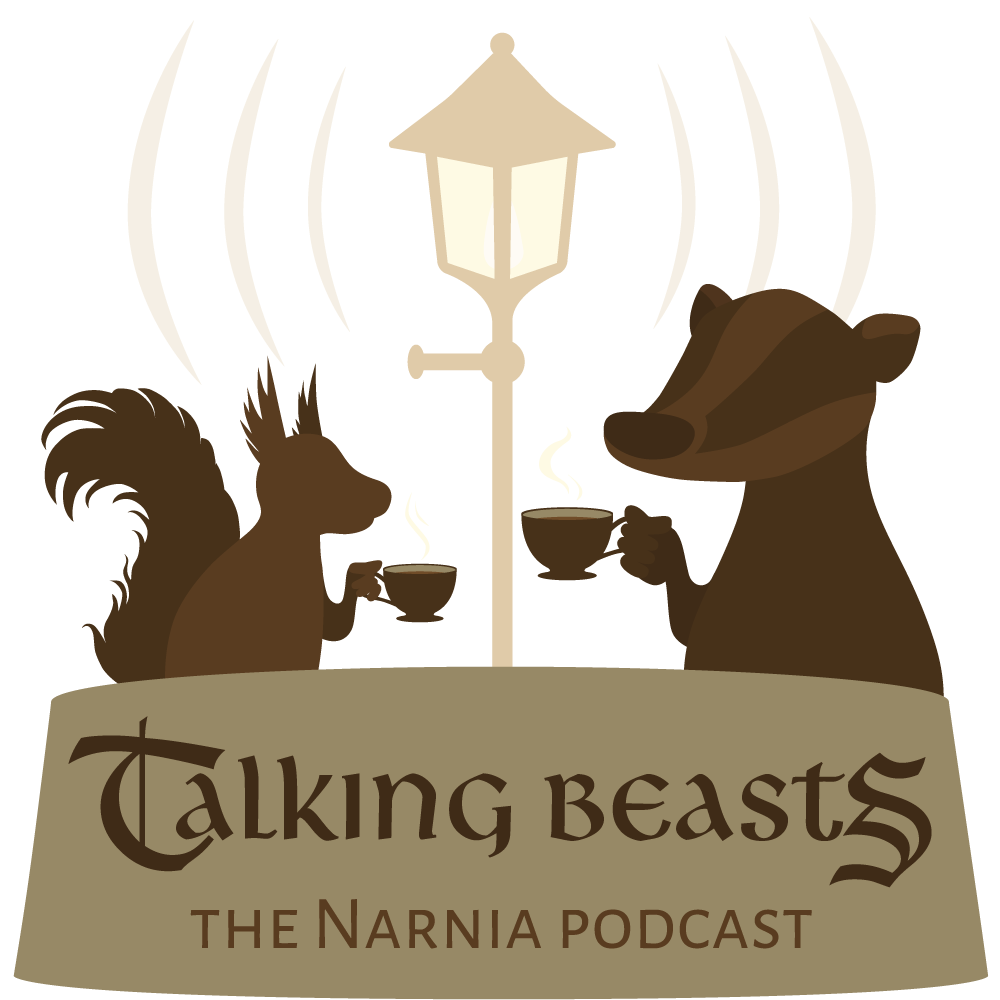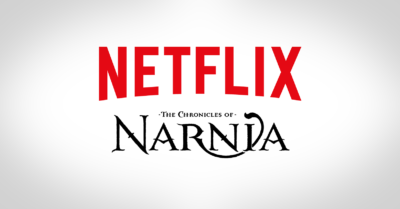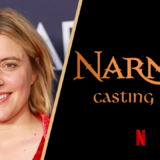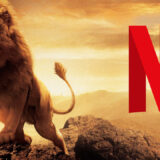NYC Interview Series: Mark Johnson
I think that Mark Johnson was ready to talk when we interviewed him. He was clearly enthusiastic about Prince Caspian and shared his feelings on finding his niche in making family movies which you can read about here.
Mark Johnson
So what was the most important thing that you learned from the first movie that you took with you to the second movie?
Mark: Well, it’s something really basic, and it’s obvious on one hand, and it’s to always write characters in stories I like. It’s never about the “Well, can we make this guy bigger and these effects more complicated or let’s have more action.” It’s really about, are we going to be compelled to follow these characters? So when you’re making a movie, what you really have to do is put on blinders because there’s so much stuff to distract you. And when you look at dailies or look at what you’re shooting, it’s not about “Is this explosion working?” or whatever else … the question is, do we care? And that’s true for any movie.
A question I didn’t get to ask the screenwriters: you made some significant changes from the source material. And typically when you see that in a movie it’s done to pander to the crowd, but in this case we have all been talking, we really sort of enjoyed the changes. If anything they really sort of pointed up some of the themes from the book. Was that a really careful choice to do that considering how many fans are out there? And how effective it was?
Mark: I agree! And going into The Lion the Witch and the Wardrobe, we were really careful about not making changes because I’ve done a lot of movies based on books. I mean I’ve done everything from The Natural to Donnie Brasco to The Notebook to My Dog Skip and to a certain degree, you make changes. We made big changes to The Notebook, for instance, and to The Natural. And this one because The Lion the Witch and the Wardrobe is so revered by so many people, you get the sense that if you tampered with it, you’re doing so at great risk. And I think we were close to it. I think we kept the integrity of that book, so much so that people would say things to me like, “I loved the fact it was so close to the book, it’s exactly how I remember the book, the scene with the frozen waterfall is exactly like the book,” which, of course, isn’t in the book. [laughter] They just so felt that it was such a piece, that it was ok. In this one, the book, when we first read it, we just weren’t sure that it was even… not that it wasn’t filmable, we just thought, “This is going to be really tough, how are we going to do this one?” And so we made structural changes and if you’ve read it you know that a third of it is told in flashback in the middle, after the Pevensies get back to Narnia they meet up with Trumpkin and then he (and I can’t remember if it’s on the boat or not) but he tells them the whole story of Prince Caspian, which we now start the movie with. The whole story with his uncle, and how his uncle murdered his father, so… But the themes are the most important ones here when you say, “What is this movie about?” The first one is about a certain kind of faith, but this one is about losing faith and then regaining it. That’s faith in a very true film sense so hopefully that makes sense to everybody.
Especially that fight scene with Peter, and how many Narnians are sacrificed because of his pride, I mean that’s not in the book but it’s such a powerful moment.
Mark: Oh, I know. It brings tears to my eyes at the end of this castle raid and it’s been so unsuccessful. And you see these people being sacrificed behind the gate, and you look in Peter’s eyes and you realize what his hubris has done.
You mentioned connected to the characters and caring about the characters and being connected to the characters. There obviously was a lot of CGI involved in this movie. A couple questions, how much was there? I assume there was more CG for more CGI effects. And secondly, particularly with Reepicheep, what about the development of that character?
Mark: Well, for me when we were doing The Lion the Witch and the Wardrobe, we were worried, “Is this movie working? Are people really going to care?” And early on we did the scene where Lucy meets Mr. Tumnus and as soon as we did that, even I didn’t have to see dailies, we were like, “Alright, this movie is going to be fine because this is its heart and soul right here with these two characters.” We didn’t have that moment necessarily in Prince Caspian certainly as written, and we’re trying to figure out … not that we could recreate that. But we did need to have a certain touching moment, I guess. And there’s a temptation to mirror or somehow try to copy the relationship with Lucy and Mr. Tumnus with Lucy and Trumpkin, and we said “No, it’s not the same thing.” By the way, even to be totally honest, as a departure from the book, we kept saying, “Is there any way to bring Mr. Tumnus back?” And it’s been 1300 years, there’s no way we could achieve that. Anyhow, the long, long answer, we sort of did that with some of the CG characters and I think that for me, one of the real physical triumphs of Prince Caspian is Reepicheep. Because I think he is such a significant character. And what’s great is that he has an even bigger role in our next one, in The Voyage of the Dawn Treader. But there’s a moment early on when I think it’s the last close-up on Trufflehunter, when he’s holding the horn to Prince Caspian and he says, “Don’t you know what this means? You’re meant to save us.” And he’s almost got a tear in his eye and it’s as emotional as any moment with a live actor. So I think that we don’t have the exact same strength as some of the moments in The Lion the Witch and the Wardrobe, but I think we make up for it with our new characters.
You face a challenge very similar to what Peter Jackson did with The Lord of the Rings in that there’s a hundred million copies of this book out there. And to keep making the movies you have to please those people but at the same time you’ve got to create a different product. How worried have you all been about offending the one hundred million, and specifically the religious element of that since that’s the most controversial part of Lewis’s vision?
Mark: Well, I think that we’ve reversed it. I’m not sure that we’ve been worried about offending people, but we do want to make sure that the expectations are somehow met. But at the same time, we’ve been very aware of the readership. Now, ironically, everybody, when we made The Lion the Witch and the Wardrobe in New Zealand, everybody in New Zealand grew up on that book as a child. Everybody on our entire crew had read it. As it turned out, not a lot of them had read Prince Caspian, so not a lot of the English-speaking world had read all seven books. If they’ve read one, it’s The Lion the Witch and the Wardrobe because a lot of people were like, “Now what happens in that one again, in Prince Caspian? Is that the one about… ?” And people were sort of fuzzy about it. So we never felt quite the same pressure, plus with the success [of LWW] hopefully the audience trusts us a little bit more. There was with the first one an, “Ok, show me, will you be true to what I remember with these books?” and I think people by and large emphatically said, “Yes.” So I think that’s why we felt a little more comfortable that we could make some changes while VERY much aware of what these books mean to so many people and we want to stay true to each one of them.
One of the things we were sitting here talking about was um, you kind of brought up the reaction of the religious community, and we talked about how we really kind of enjoyed the Susan/Caspian relationship that was definitely not in the book, and she [me!] was saying that some of her readers just saw the trailer and all they saw the kiss and they were horrified and yet when you see the movie, it really works. So was there any nervousness about creating this relationship where one didn’t exist?
Mark: Well, this is interesting because literally… we told you last night that you’re the first audience that we’ve seen it with. We tested it once in January in California, but the visual effects, I mean Reepicheep was a little stick character and so it was hard to tell. And so it was really interesting for me to see, and obviously the audience was 100% press, so… not that you’re all cynical… [laughter] but there wasn’t a whole lot of reaction. But there was the moment when Prince Caspian meets the four Pevensies and he says, “I thought you’d be older, you’re not exactly what I thought,” and there’s a look between Susan and him, the audience reacted. They’re sort of like, “Ooooh.” [laughter] And so I was very happy with that. And there was a little bit of applause, and in some theaters there will be bigger applause when the two of them have their little kiss at the end. By the way, our co-producer, Douglas Gresham who was C. S. Lewis’s step-son, and a great partner and a lovely, lovely man, he wasn’t sure about the kiss, he thought there was too much Hollywood going on there. But it’s not something that we dwell on, it just happens to be that attraction. And I don’t feel like we’ve done anything really inorganic.
Well, that’s the weird thing, when you see it in context, you enjoy it. If you’re a fan and you’ve read it as a kid, and you just see that, there’s like this scary moment, “What have they done?” [laughter]
Mark: Hollywood has taken over! [laughter]
But I think it would have been a bit incomplete if it hadn’t been there because there is that kind of connection with them throughout the movie.
Mark: Right.
Kind of a flirty thing going on there.
Mark: We took out a scene — it’s an archery scene where they’re practicing and she actually shows him up. It’s a very nice romantic tension between the two of them. And we thought, “You know, this is too much. Let’s just establish that there is this flicker of something and pay it off briefly without making a…”
Will you save that for the director’s cut?
Mark: Yeah.
How did you figure out what to do with [Edmund]?
Mark: Well, it’s interesting you know. Edmund has his big moment in the first one when he betrays his family and then comes around. It’s hard, you know, there are so many characters to service. Peter certainly has his story here, and we established early on that Peter would probably have the most difficulty fitting back into England. He was the king of Narnia, and then all of a sudden he was a regular schoolboy and told what to do. Lucy had longed to go back, Susan was just trying to adapt, although we can see that she wasn’t quite successfully doing that as the kid we call “Geeky Boy” in the credits is trying to flirt with her and he points out that he sees her alone all the time. So we made clear that they had trouble fitting in. Edmund, we’re not quite sure how he fit in. And in the first film we really made a big deal how he missed his father more than anyone and didn’t want to take orders from his older brother. This one he’s really becoming his own kid, and you know that it’s he who kills the White Witch. By the way, that’s something else, the White Witch is not in the book Prince Caspian, so that’s a little bit of a cheat, but I think that it’s a ….
What sparked bringing her back?
Mark: Well, initially we went to The Lion the Witch and the Wardrobe and said, “Who are the great characters?” How do we bring Mr. Tumnus back — and there’s just no way to justify that. The White Witch because she’s magical and has all these powers…
They draw the blue circle in the book. They’re trying to bring her back.
Mark: That’s right.
So it’s a short leap to say, “Well they get her for a second.”
Bring back the Oscar winner! [laughter]
You have both Peter and Caspian almost going over the edge.
Mark: Mhmm.
Why did you do that?
Mark: It’s a good question because Edmund doesn’t have the moment that some of the other characters have. I think that Skandar is an amazing young man and the scene he has with Miraz when he goes and issues the challenge. “No, no, it’s King Edmund. I know it’s confusing.” [laughter]
All the way around the acting on the kids’ part seemed to progress.
Mark: Oh great, that’s really good to hear.
But Edmund, I was surprised how likable I found him in this movie after seeing the first one. I mean he’s supposed to be unlikable in the first one, but he really grew. He’s kind of a little heart-throb now.
Mark: Yep. Oh I know, they’ve all grown up so well and what’s so great about them is that they all went off after The Lion the Witch and the Wardrobe to be regular school kids. They loved making the movie but if we never made another one that’d be fine too. They love school and they didn’t want to become what we call, “Hollywood Kids.”
I know the short answer on continuing to make the movies is, “If you keep making money, you’ll keep making movies”‘ but could you just discuss a few of the challenges you’d be conceiving making the rest of the films? Just in terms of the actors’ ages, and the sets… As Douglas Gresham said you couldn’t really film two and three together because they share no sets. When you film in a totally different place it makes no business sense at all. So could you just discuss some of the other challenges in the series?
Mark: You know we did… after we opened up The Lion the Witch and the Wardrobe in December 2005, the following January both studios were urging us to go prepare the next one and Andrew Adamson called me up in the middle of the night, didn’t introduce himself and just said, “Do you really want to do another one of these?” And it’s a real question because it’s so demanding of time and effort and everything else and how do you do it? And so Prince Caspian made the most sense. We really had to do it next or we’d never have this cast again. So then we said, “Ok, let’s do that” and then we weren’t sure there was a movie there. We toyed with the idea of combining Prince Caspian and Dawn Treader.Like BBC did.
Mark: Yeah, that’s exactly right. So for me, yes of course, obviously we want them to continue to make money and be successful. It’s more if you’re going to spend two and a half years of your life making something, hopefully you’re thinking of something more important than a paycheck. And is it really exciting? And I love these characters and over the past several years really fallen in love with making family films. So I started with A Little Princess and My Dog Skip and even The Rookie and this is a world that I really love being a part of and creating. And the beauty of this franchise is each movie is so different from the one that preceded it and the one that follows it. And in Dawn Treader… the Narnia we saw in The Lion the Witch and the Wardrobe and now Prince Caspian has nothing to do with the Narnia in Dawn Treader. So it will always be exciting and new.
So Dawn Treader is intended to stand on its own at this point?
Mark: Yes.
Also read NarniaFans’ interview with Mark Johnson here.
Podcast: Play in new window | Embed

